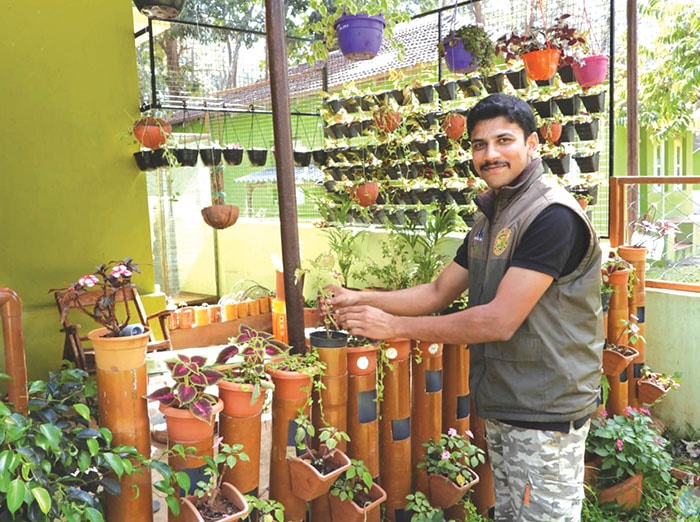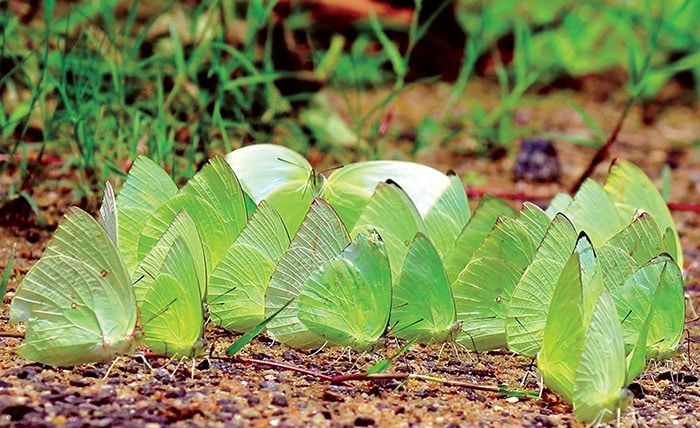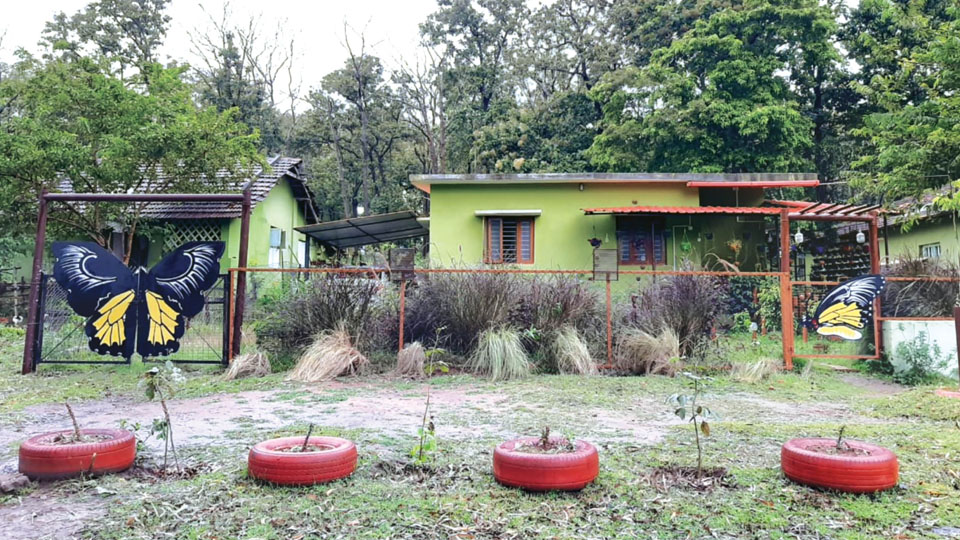A study of butterfly species has become an important element in conservation biology that is gaining importance in recent years. A Butterfly Park has been established inside the Nagarahole National Park by an enthusiastic Forest Officer who has made up his mind to take what began as a hobby — or call it a passion — to greater heights, achieving conservation as well.
While over 17,000 butterfly species are documented in different parts of the world, India, with 1,504 butterfly species are identified till date and that accounts for 8.7 percent of butterfly species of the world. Karnataka has 325 species.
“I am interested in butterflies that fly around Nagarahole Tiger Reserve,” said Deputy Range Forest Officer (DRFO) Naveen Rawat, who has established a Butterfly Park at his official residence. Rawat decided to work on the butterfly zone when he spotted many species that fluttered his improvised garden. Slowly he established a full-fledged garden and has fenced it now with a giant figure of a butterfly.
Karnataka already has its own State butterfly — the Southern Birdwing (Troides Minos). It is the largest butterfly species, is endemic to South India and resembles the colours of the State Flag. There are over 160 species of butterflies in Nagarahole and earlier there were more. The exact count will be available only after a census.

Research findings
The decline in butterfly species is mainly due to anthropogenic activities and change of environmental factors beyond the tolerance limit of butterfly species. This problem is common in various protected areas, where they are facing major problems with human activities, forest fires and Nagarahole Tiger Reserve is no exception to it.
The National Park extends to 843.39 square kilometres and covers Mysuru and Kodagu districts. In a 2018 report on the checklist of butterfly species found at Nagarahole National Park, researchers S. Basavarajappa, V. Gopi Krishna and S. Santhosh have documented 138 species from Hesperiidae, Lycaenidae, Nymphalidae, Papilionidae and Pieridae families across the Tiger Reserve.

Common species
Some of the common species names are Angled Pierrot, Banded Blue Pierrot, Common Ciliate Blue, Common Hedge Blue, Common Onyx, Forget Me Not, Indian Cupid, Lime Blue, Malayan, Plain Cupid, Plum Judy, Slate Flash, Tailless Line Blue, Zebra Blue, Angled Castor, Baronet, Blue Pansy, Chocolate Pansy, Common Bush Brown, Common Evening Brown, Common Nawab, Dark Brand Bush Brown, Double Banded Crow, Gladeye Bush Brown, Striped Tiger, Tamil Tree Brown, White Fourring, Common Mormon, Southern Birdwing, Tailed Jay, Chocolate Albatross, Common Emigrant, Plain Orange Tip, Small Grass Yellow and Three Spot Grass Yellow.
“Existing butterfly species density, abundance and seasonal occurrence varied considerably at different forest ranges and provided a platform for further in depth research for their conservation in the years to come,” the researchers have observed in their paper published in the Journal of Entomology and Zoology Studies (JEZS).

Lantana growth
One of the main hurdles in protecting the delicate beauties at Nagarahole is the growth of Lantana Camara and Senna Spectabilis weeds that are uncontrollably growing inside the forest. Lantana Camara is the biggest threat and has invaded many parts of the National Park. These weeds push out native species of vegetation and prevent fresh growth of native vegetation and flowers that bloom on them. Butterflies thrive on this native vegetation.
Though DRFO Naveen Rawat’s efforts in butterfly conservation are small and restricted to his own backyard, there needs to be a concerted effort by the Tiger Reserve authorities to save the rare species. Rawat has used locally available materials for the Butterfly Park including bamboo, discarded tyres and other stuff.








Recent Comments